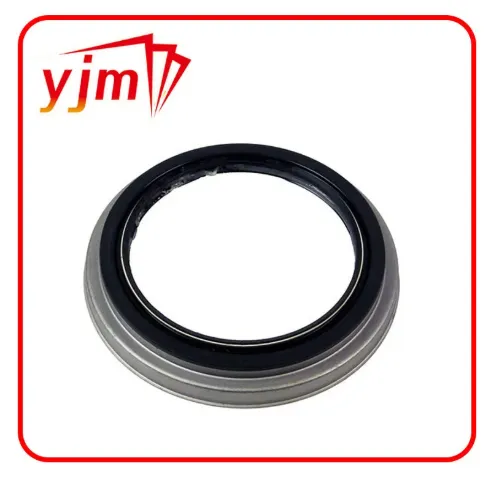Everything You Need to Know About Crankshaft Oil Seals
The crankshaft oil seal is a small but vital component in any engine. It prevents oil leaks where the crankshaft exits the engine block—ensuring the engine runs efficiently and remains protected from contaminants. In this article, we'll explore the function and importance of the front crankshaft seal, rear crankshaft seal, and other components like the crank seal and front main seal.

What Is a Crankshaft Oil Seal?
A crankshaft oil seal is a rubber or elastomer ring installed at the end(s) of the crankshaft where it exits the engine block. It prevents engine oil from escaping while allowing the crankshaft to rotate freely. Without a proper seal, oil would leak out quickly, reducing lubrication and potentially damaging the engine.
There are two main types of crankshaft oil seals:
Front crankshaft seal – located behind the crankshaft pulley or harmonic balancer.
Rear crankshaft seal – located between the engine and transmission, also known as the rear main seal.
Both are critical to maintaining oil pressure and engine cleanliness, and their failure can lead to major engine issues.
Signs of a Failing Front Crankshaft Seal or Rear Crankshaft Seal
The front crankshaft seal is positioned at the engine's front end, usually near the timing cover and crank pulley. It seals oil inside while the crankshaft spins thousands of times per minute. Due to heat, pressure, and age, this seal can become brittle and leak over time.
Common symptoms of a bad front crankshaft seal:
Oil leaks near the crank pulley or timing cover
Visible oil on belts or the serpentine drive system
Engine oil level dropping without obvious cause
The rear crankshaft seal, often referred to as the rear main seal, is more difficult to inspect and replace because it sits between the engine and transmission. It serves the same function as the front seal—retaining oil—but failure here often results in oil dripping from the bell housing or transmission case.
Signs of a bad rear crankshaft seal:
Oil puddles under the vehicle near the back of the engine
Oil contamination on the clutch or flexplate
Low oil pressure or gradual oil loss over time
Early diagnosis and repair of these seals can prevent catastrophic engine damage and reduce repair costs.
The Role of the Crank Seal and Front Main Seal
The terms crank seal and front main seal are often used interchangeably with crankshaft oil seal, but it's worth noting the distinctions depending on context.
The crank seal is a general term that refers to either front or rear crankshaft seals. It may also be used to describe seals found in various rotating crankshaft areas.
The front main seal specifically refers to the front crankshaft seal and is responsible for keeping oil within the timing system and front engine components.
Modern engines often require precision-engineered crank seals that can handle high RPMs, varying oil viscosities, and extreme temperature changes. Materials like Viton, PTFE, or silicone rubber are commonly used for improved durability.
When replacing a front main seal, it’s essential to:
Inspect the crankshaft surface for wear or grooves
Use proper seal installation tools to avoid damaging the lip
Replace adjacent gaskets or components (e.g., timing cover) if necessary
Your engine's crankshaft oil seal plays a critical role in oil retention, pressure maintenance, and overall cleanliness. Whether you're dealing with a leaking front crankshaft seal, a hard-to-access rear crankshaft seal, or planning a full replacement of the front main seal, it’s crucial to address any issues early to avoid further damage.
Replacing a worn crank seal may seem like a small task, but it can make a significant difference in engine performance, lifespan, and reliability. Always use high-quality parts and follow proper installation procedures for the best results.
-
High-Quality Seal 12x22x5 for Industrial & Automotive Use | YJM Seal
Nuacht Nov.25,2025
-
Seal 12x20x5: Precision Radial Shaft Seals for Industrial Reliability
Nuacht Nov.24,2025
-
Seal 12x18x5: Essential Guide to Specifications, Applications & Vendors
Nuacht Nov.24,2025
-
Understanding Seal 12 20 5: Applications, Specifications & Industry Insights
Nuacht Nov.23,2025
-
Durable Oil Seal 85x110x12 – Reliable Sealing Solutions for Industry
Nuacht Nov.23,2025
-
Durable and Precise Oil Seal 75x95x10 for Efficient Machinery | YJM Seal
Nuacht Nov.22,2025
-
Durable Oil Seal 75x100x10 for Reliable Industrial Performance | YJM Seal
Nuacht Nov.22,2025
Catagóirí táirgí















